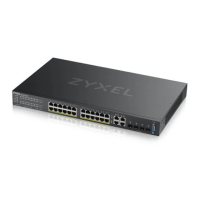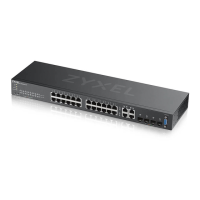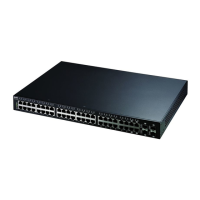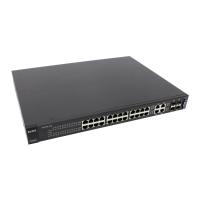GS2220 Series User’s Guide
289
C HAPTER 29
Loo p G ua rd
29.1 Lo o p G ua rd O ve rvie w
This chapter shows you how to configure the Switch to guard against loops on the edge of your network.
Loop guard allows you to configure the Switch to shut down a port if it detects that packets sent out on
that port loop back to the Switch. While you can use Spanning Tree Protocol (STP) to prevent loops in the
core of your network. STP cannot prevent loops that occur on the edge of your network.
Fig ure 218 Loop Guard vs. STP
Refer to
Section 29.1.2 on page 289 for more information.
29.1.1 Wha t You C a n Do
Use the Lo o p G ua rd screen (
Section 29.2 on page 291) to enable loop guard on the Switch and in
specific ports.
29.1.2 Wha t You Ne e d to Kno w
Loop guard is designed to handle loop problems on the edge of your network. This can occur when a
port is connected to a Switch that is in a loop state. Loop state occurs as a result of human error. It
happens when two ports on a switch are connected with the same cable. When a switch in loop state
sends out broadcast messages the messages loop back to the switch and are re-broadcast again and
again causing a broadcast storm.
If a switch (not in loop state) connects to a switch in loop state, then it will be affected by the switch in
loop state in the following way:
• The switch (not in loop state) will receive broadcast messages sent out from the switch in loop state.
• The switch (not in loop state) will receive its own broadcast messages that it sends out as they loop
back. It will then re-broadcast those messages again.
The following figure shows port N on switch A connected to switch B. Switch B has two ports, x and y,
mistakenly connected to each other. It forms a loop. When broadcast or multicast packets leave port N

